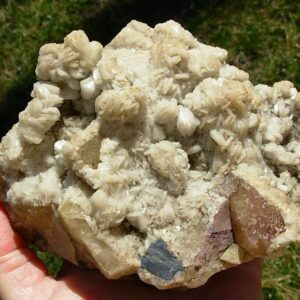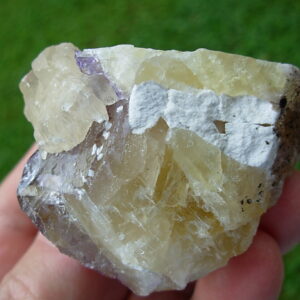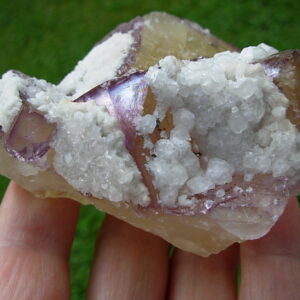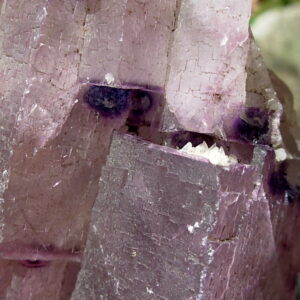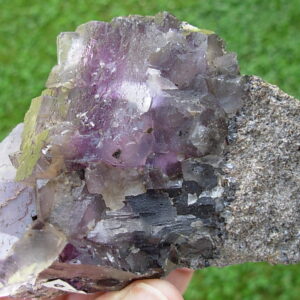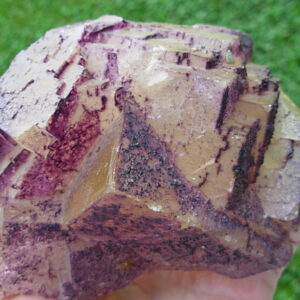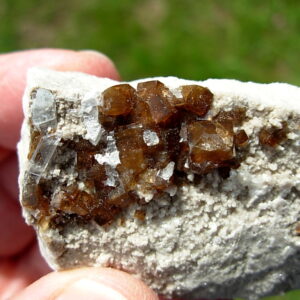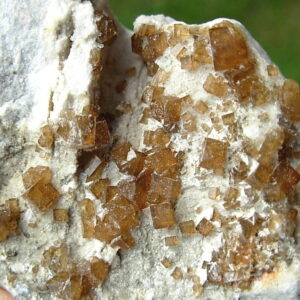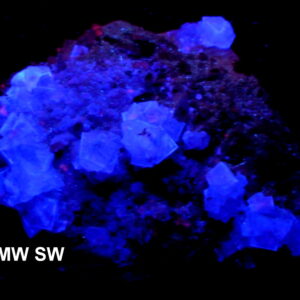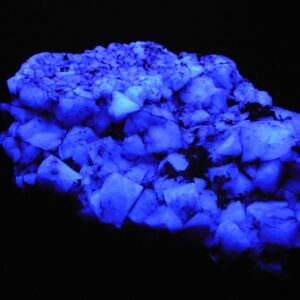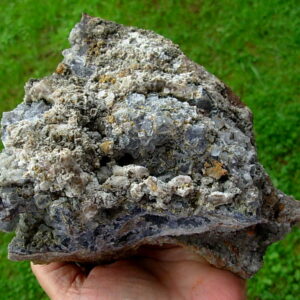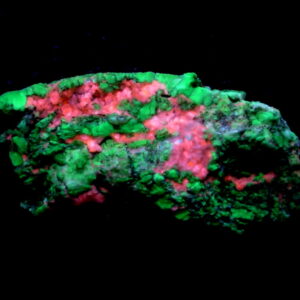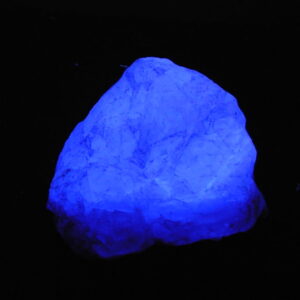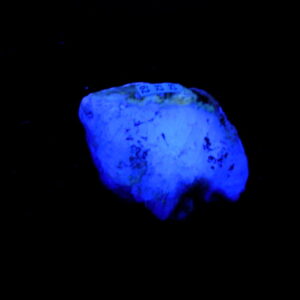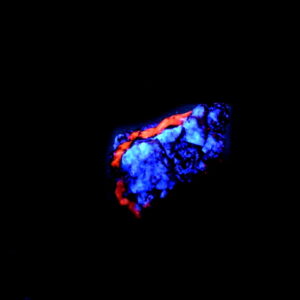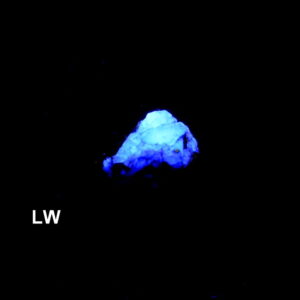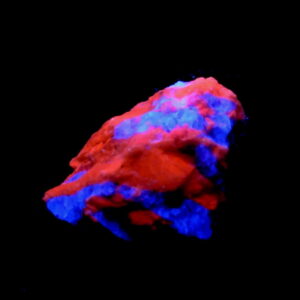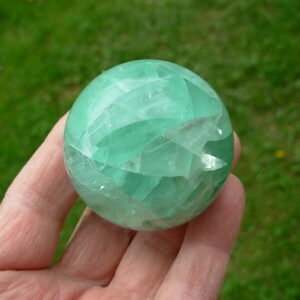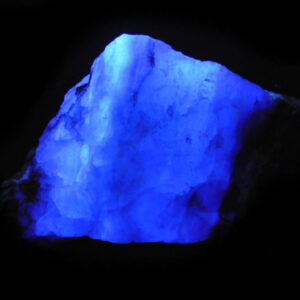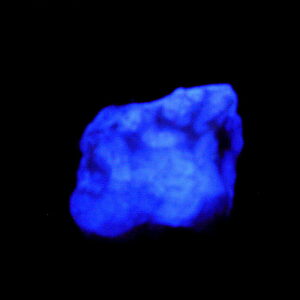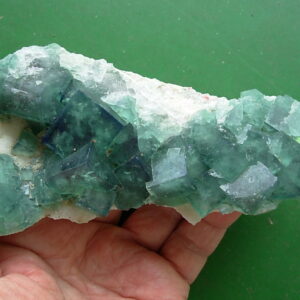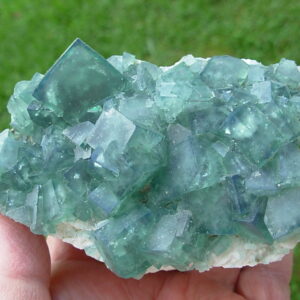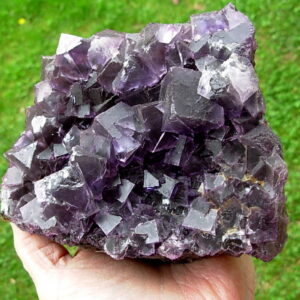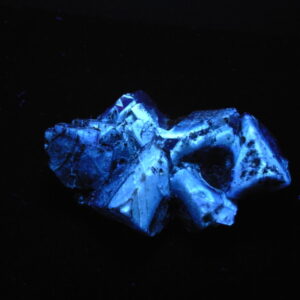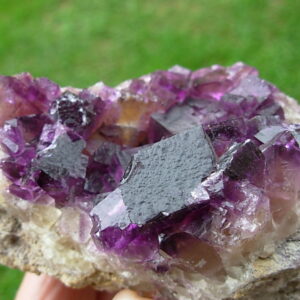Fluorites
 Fluorite comes in every color imaginable. Pure Fluorite is colorless. The colors found in fluorite are caused by mineral impurities, which are normally hydrocarbons. The hydrocarbons (and the coloring) can be removed from a specimen by heating. Collectors often procure a vibrant colored piece and then display it in bright sunlight. The heating from the sun can cause your specimen to lose its brilliant color if left in direct sunlight too long.
Fluorite comes in every color imaginable. Pure Fluorite is colorless. The colors found in fluorite are caused by mineral impurities, which are normally hydrocarbons. The hydrocarbons (and the coloring) can be removed from a specimen by heating. Collectors often procure a vibrant colored piece and then display it in bright sunlight. The heating from the sun can cause your specimen to lose its brilliant color if left in direct sunlight too long.
Fluorite is one of the more famous fluorescent minerals. Many specimens strongly fluoresce, in a great variation of color. Rogerly Mine in Weardale England is a well known producer of super fluorescent specimens. The word "fluorescent" is derived from the mineral Fluorite. The name of the element fluorine is also derived from Fluorite. Fluorite is soft and is not usable as a gemstone although their natural beauty can rival most natural gemstones. Fluorite comes from the root word fluo meaning “to flow” Fluorite is used in making flux for steelworking
The Rogerley Mine is located in the historic Weardale mining District of Northern England. First discovered by Lindsay Greenbank and Mike Sutcliffe in the early 1970's, it is to date, the only mine in all of Britian to be worked on a commercial scale solely for the recovery of crystallized mineral specimens.
Since the summer of 1999, UK Mining Ventures has operated the Rogerley Mine on a seasonal basis, producing many fine, well crystallized specimens of green fluorite.
Amphiboles crystallize into two crystal systems, monoclinic and orthorhombic. Amphiboles are minerals of either igneous or metamorphic origin; in the former case occurring as constituents (hornblende) of igneous rocks, such as granite, diorite, andesite and others. Those of metamorphic origin include examples such as those developed in limestones by contact metamorphism (tremolite) and those formed by the alteration of other ferromagnesian minerals (hornblende). Pseudomorphs of amphibole after pyroxene are known as uralite.
The name amphibole (from the Greek word amphibolos meaning 'ambiguous') was used by René Just Haüy to include tremolite, actinolite, tourmaline and hornblende. The group was so named by Haüy in allusion to the protean variety, in composition and appearance, assumed by its minerals. This term has since been applied to the whole group. Four of the amphibole minerals are among the minerals commonly called asbestos. These are: Anthophyllite, Riebeckite, Cummingtonite/Grunerite series, and Actinolite/Tremolite series. The Cummingtonite/Grunerite series is often termed Amosite,or Brown Asbestos and Riebeckite is known as Crocidolite or Blue Asbestos. These are generally called Amphibole Asbestos.
If you are interested in learning more about the Rogerley Mine, the history and geology of the Weardale area, or obtaining specimens from the mine, please click the link below to check out the rest of this site.
-
#02 Old Stock Yellow Fluorite with Purple Phantoms, Marcasite, Barite and Calcite from Cave-in-Rock, IL
$106.00 Add to cart -
#03 Yellow Fluorite with Purple Phantoms, Quartz, Calcite and Witherite
$199.00 Add to cart -
#04 Lavender Stepped Fluorite Cubes with tiny Dogtooth Calcite mountains from Cave-in-Rock
$269.00 Add to cart -
#05 Fluorite with matrix of Sphalerite, Barite and Pyrite
$139.00 Add to cart -
#06 Yellow Fluorite with Purple Rind and etched with Purple Fluorite
$459.00 Add to cart -
#07 Root Beer Fluorite on Matrix from Clay Center Ohio
$49.00 Add to cart -
#08 Root Beer Fluorite on Matrix from Clay Center Ohio
$79.00 Add to cart -
#09 Clear to Lilac Purple Cubic Fluorite with Hematite Inclusions
$59.00 Add to cart -
#10 Old Stock Clear to White Fluorite Cubes on Matrix from Weardale
$219.00 Add to cart -
#50 Fluorite in Matrix from Fluorite Ridge NM
$69.00 Add to cart -
#51 Fluorite in Matrix from Fluorite Ridge NM
$59.00 Add to cart -
#55 Fluorite Calcite and Chalcedony from Arizona
$69.00 Add to cart -
Fluorescent “Blue Ice” Fluorite from Mexico 61
$30.00 Read more -
Fluorescent “Blue Ice” Fluorite from Mexico 62
$20.00 Read more -
Fluorescent Fluorite and Calcite from England 58
$45.00 Read more -
Fluorescent Fluorite and Galena 56
$49.00 Add to cart -
Fluorescent Fluorite Veins in Calcite 57
$59.00 Read more -
Fluorescent Green 50mm Fluorite Sphere from China 64
$46.00 Add to cart -
Fluorescent Green Fluorite Willemite and Calcite 59
$39.00 Add to cart -
Fluorescent Large Green Fluorite from Peru 60
$29.00 Add to cart -
Fluorescent light Green Fluorite from Mexico 63
$19.00 Read more -
Green Fluorite Cubes on matrix from Mandronarivo 59
$45.00 Read more -
Green Fluorite Cubes on matrix from Mandronarivo 60
$59.00 Add to cart -
Green Fluorite on Pyrite from Peru 18
$269.00 Add to cart -
Large Cabinet 3 Sided Purple Cube Fluorite from Mexico
$59.00 Add to cart -
Large Purple Cube Fluorite from Mexico 66
$30.00 Add to cart -
Purple Cubes on Yellow Fluorite Crystals in Matrix from Mexico 67
$69.00 Add to cart

